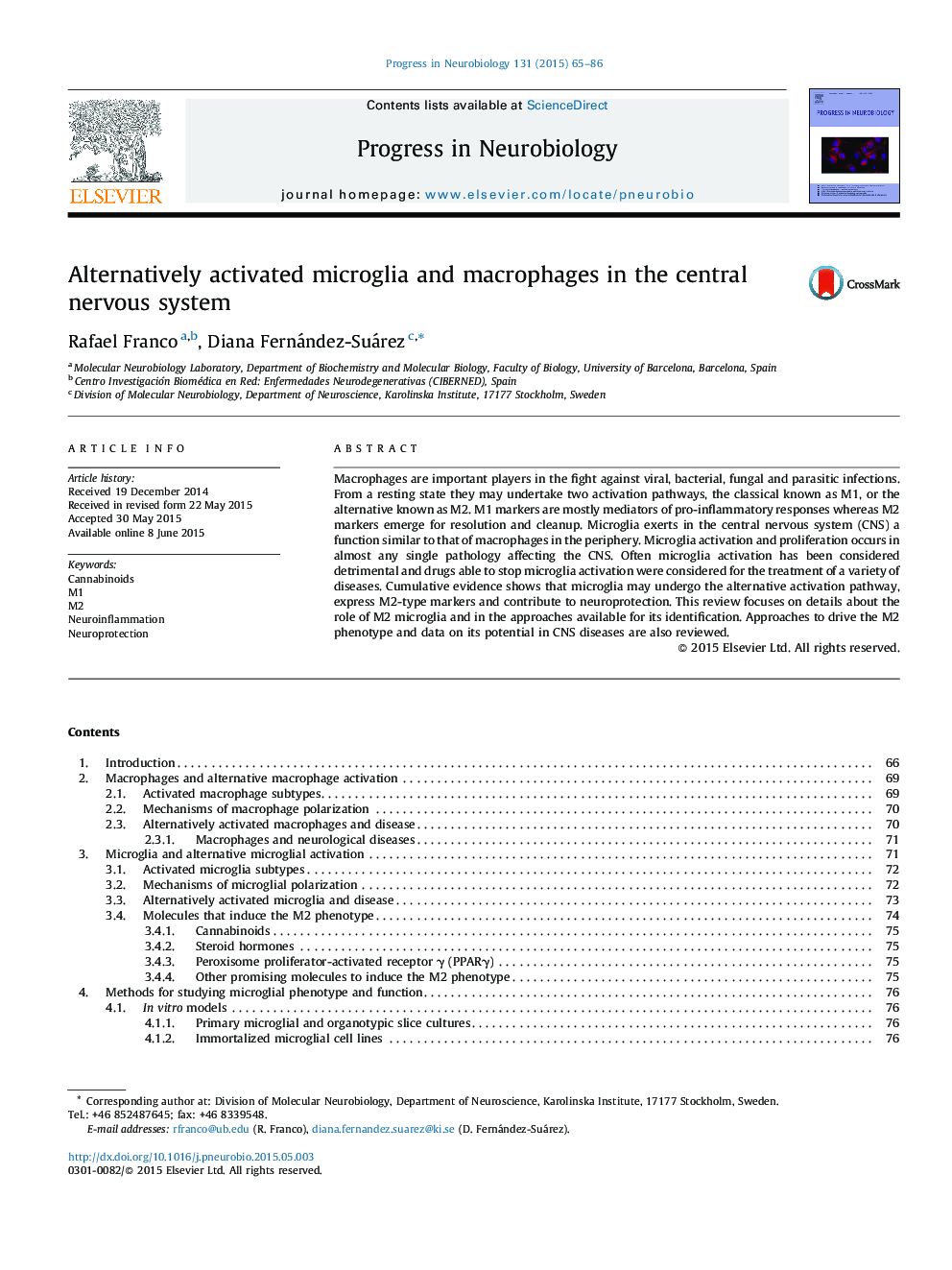| Article ID | Journal | Published Year | Pages | File Type |
|---|---|---|---|---|
| 4353266 | Progress in Neurobiology | 2015 | 22 Pages |
•The healthy brain parenchyma contains M0 microglial cells and no macrophages.•Upon injury infiltrated macrophages and microglia polarize into M1 or M2 phenotypes.•New markers to differentiate M1/M2 states in macrophages/microglia are needed.•M2 skewing drugs have potential for the treatment of CNS disorders.•Combining in vivo imaging and animal models is crucial to study microglial function.
Macrophages are important players in the fight against viral, bacterial, fungal and parasitic infections. From a resting state they may undertake two activation pathways, the classical known as M1, or the alternative known as M2. M1 markers are mostly mediators of pro-inflammatory responses whereas M2 markers emerge for resolution and cleanup. Microglia exerts in the central nervous system (CNS) a function similar to that of macrophages in the periphery. Microglia activation and proliferation occurs in almost any single pathology affecting the CNS. Often microglia activation has been considered detrimental and drugs able to stop microglia activation were considered for the treatment of a variety of diseases. Cumulative evidence shows that microglia may undergo the alternative activation pathway, express M2-type markers and contribute to neuroprotection. This review focuses on details about the role of M2 microglia and in the approaches available for its identification. Approaches to drive the M2 phenotype and data on its potential in CNS diseases are also reviewed.
